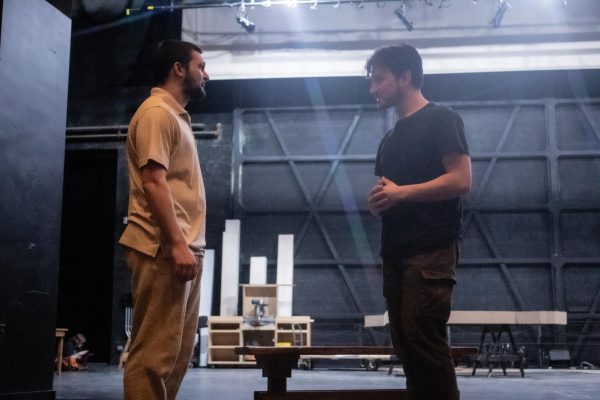University Art Classes Switch to Online Instruction, Studio Time Lost
Art studios at Baldwin Wallace University, where students who spent hours working and creating, now remain empty after the announcement that the remainder of the spring semester would be done through remote instruction.
The news that BW would be continuing the rest of the semester through remote instruction meant no more in-person art classes and the loss of the studio space so many of them are used to working in.
“My initial reaction was a feeling of defeat and discouragement,” said Maya Matthews, a Studio Art major in her senior year. “I worried about the changes that would be made and how I would still be able to go up to Kleist and get work done in time of an epidemic.”
Professors in the Art Department have been working to find ways to continue teaching their classes remotely since students may no longer have access to the same materials as they did when classes were in-person.
“There’s significant limitations to a home studio. Even with all my supplies there’s a number of resources I only have access to on campus and cannot afford to purchase for home,” said Jake Knowlton, a Studio Art major.
Benjamin Lambert, a professor in the Art Department who is currently coordinating multiple sections of ceramics as well as having a number of students with independent studies is working with students to make sure they can continue learning at home.
“There is no way to expect all of my students that are enrolled in classes to have access to clay, glaze, kilns, and wheels. Even if they did, it’s almost impossible to discuss ceramic works critically without being [able] to handle them,” said Lambert. “I have decided to transition to using paper and/or other sheet-based materials that all students are likely to have access to. I have also taken this time away from the studio as an opportunity to introduce students to the professional contemporary ceramics community through researching ceramic artists on Artaxis.org and discussing their findings on Blackboard.”
One thing that cannot be recreated at home is the art environment and getting to work with other classmates.
“This area is where I see the students missing out the most. In the classroom, there is always a dialogue happening while students are designing and assembling their works in a community studio,” said Lambert. “It’s not possible to simulate the community that happens in the classroom in an online format.”
Steven Ziebarth, a professor in the Art Department, is currently teaching a seminar course, multiple sections of painting, and a color theory course, also felt there was a difference when it came to working in a community where students are able to give feedback to working at home by themselves.
“I really don’t believe there is a substitution for the multitude of ways that information and inspiration percolates in a studio full of artists,” said Ziebarth. “One of the simplest ways this can be understood is by thinking about the difference between standing in front of an Anselm Kiefer painting, versus seeing one on a small screen on your phone. There is an incredible amount of information lost in a mediated version.”
Matthews had a similar stance saying, “Working at home shows how important it is to have people to critique and bounce ideas off of. Also, being able to create art in a studio where others are creating acts as motivation, one that might be hard to get at home.”
Some classes are now using discussion boards where students can post their work so they can receive feedback from others.
Despite the many obstacles, with the hard work of professors and students, creativity continues.
“I’m trying to sketch or sculpt something every day—regardless if I like it or not. I always think about how my professor (Steve Ziebarth) once told our class that if we ever find ourselves in an ‘artist block’ or just not knowing what to create, keep creating regardless,” said Matthews.
When asked if there was anything they would like to stress or say to the students working at home right now, Ziebarth had advice concerning the utility of the creative process during times of uncertainty.
“Just to remember that the creative process can function as a type of psychological sanctuary. We are all watching something rather dire unfold in front of us, but the act of making something can provide us with a mental respite in the face of all the uncertainty,” said Ziebarth.
Lambert also had advice for students who are currently working at home.
“I would like to tell them to be safe, patient, don’t listen to too much news, go outside whenever you can, practice social distancing and call your loved ones every day. Be diligent, productive, and remember that we will all come out of this in the not so distant future,” said Lambert.
The Exponent is looking for financial contributions to support our staff and our newsroom in producing high-quality, well-reported and accurate journalism. Thank you for taking the time to consider supporting our student journalists.












































